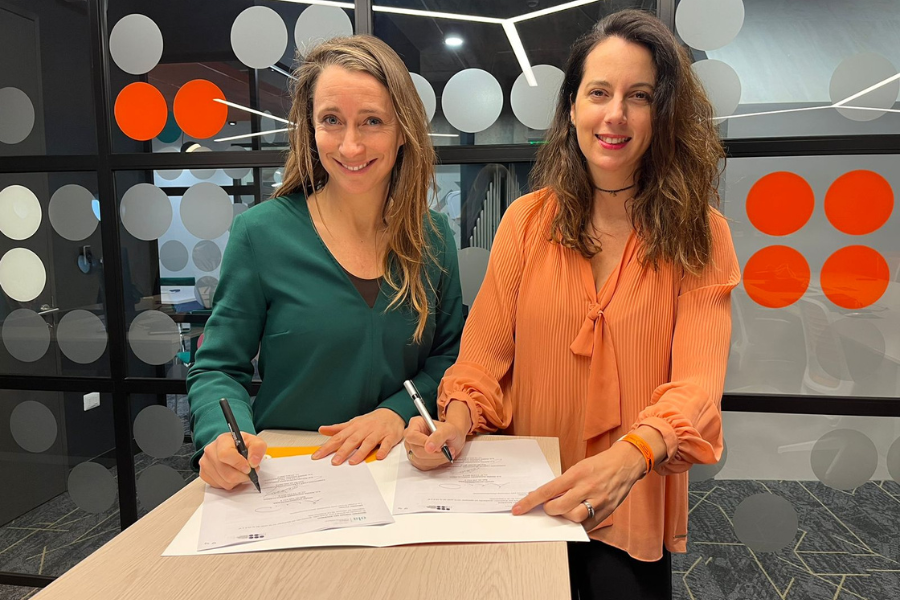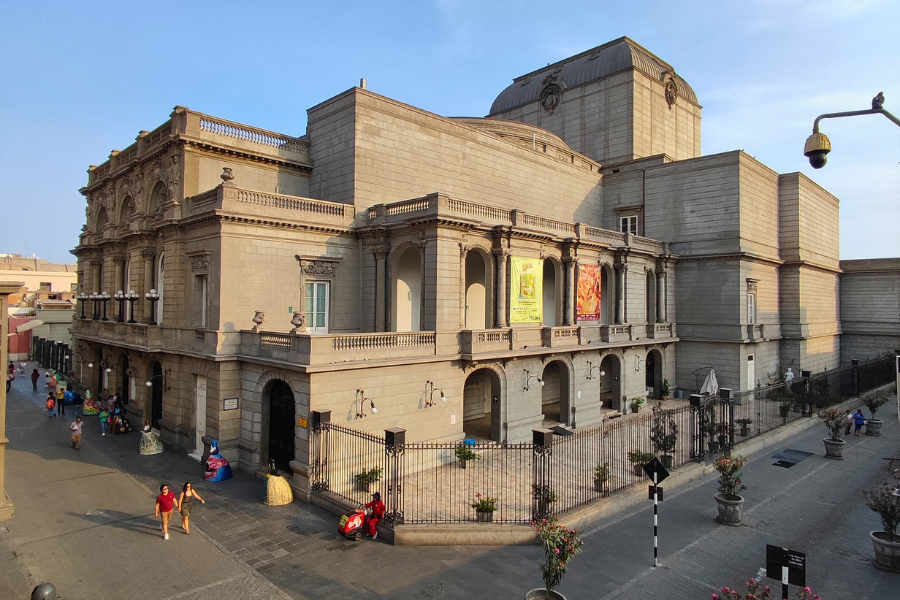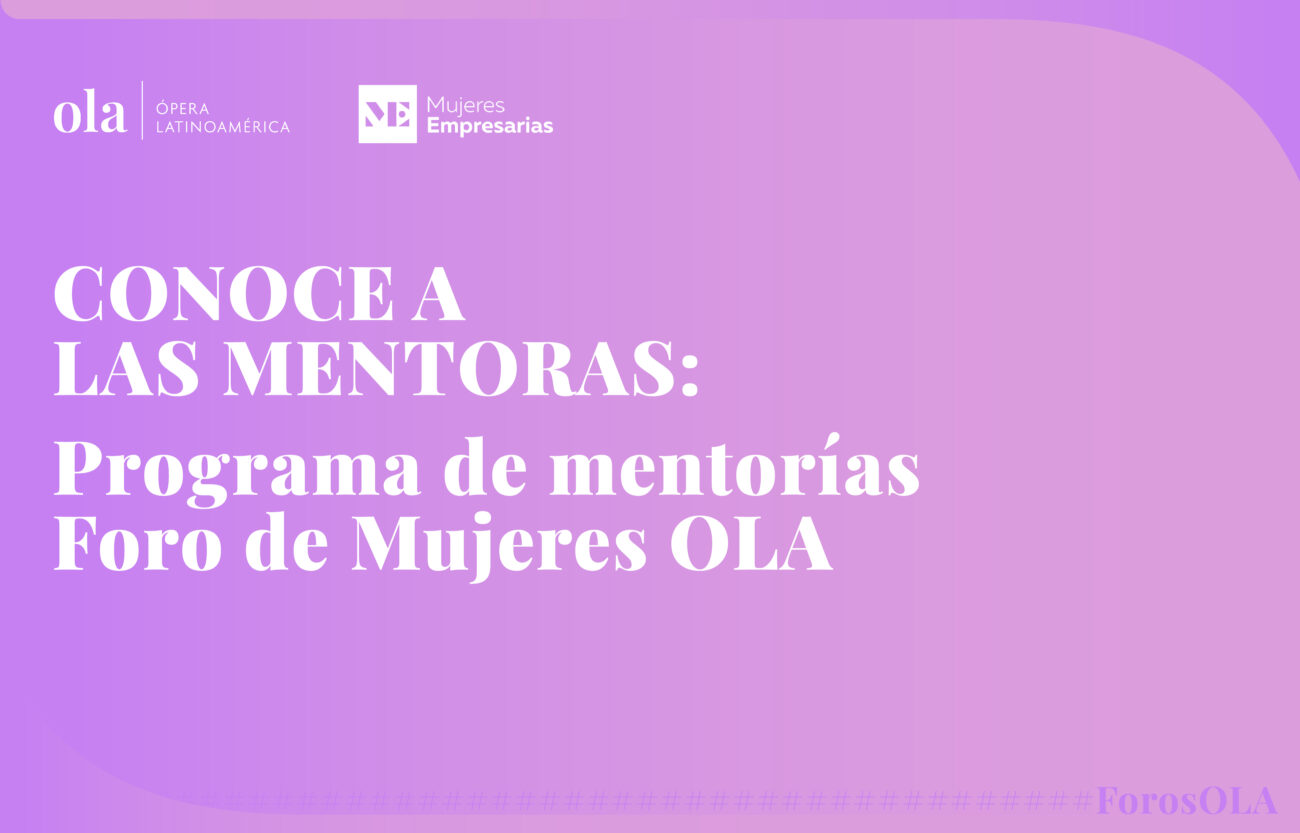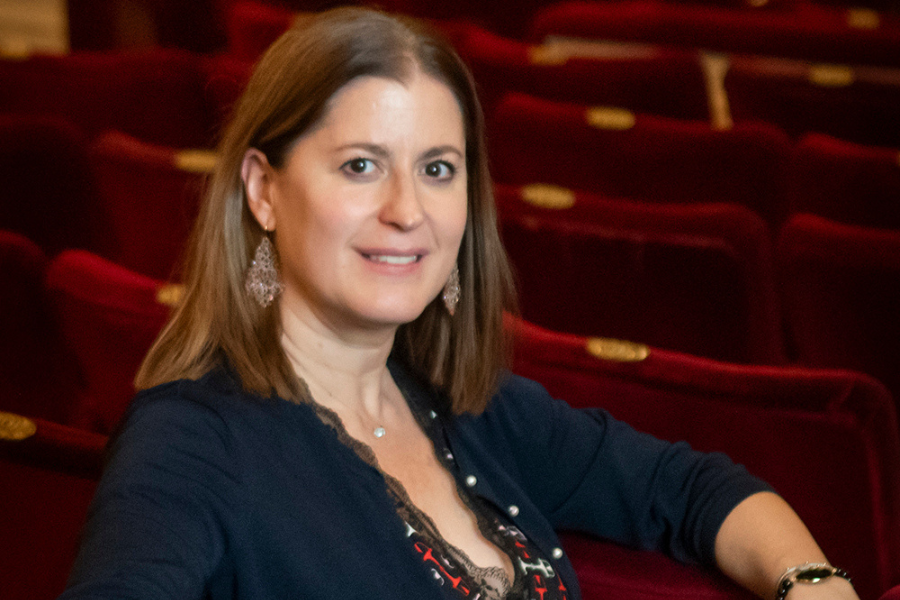XR Stage: La tecnología que trae la simulación virtual a los escenarios

Por medio de un acuerdo estratégico, Ópera Latinoamérica (OLA) y el Centro de Revolución Tecnológica en Industrias Creativas (CRTIC) proponen un nuevo proyecto para implementar un plan piloto de la tecnología XR Stage en cinco teatros chilenos. El proyecto, desarrollado originalmente por la Ópera Nacional de Finlandia, consiste en una plataforma de visualización 3D inmersiva para el diseño de producciones escénicas a gran escala. Así, esta iniciativa conjunta, que actualmente está en fase de postulación para su financiamiento, sería pionera en Latinoamérica en la aplicación de elementos de realidad virtual y aumentada en la gestión de teatros.
Un casco, un potente software y un dispositivo como un computador o un teléfono móvil. ¿Podrían ser los únicos elementos necesarios para concebir un diseño escénico? ¿Para imaginar la distribución de las luces, proyecciones y escenografías en un escenario? Las más espectaculares producciones de ópera están cada vez más cerca del inmersivo mundo de los videojuegos. O al menos el proyecto XR Stage, diseñado por la Ópera Nacional de Finlandia y Opera Beyond junto con la compañía Varjo, permite dar los primeros pasos.
Ópera Latinoamérica se acerca a dar estos pasos mediante la firma de un acuerdo con el Centro de Revolución Tecnológica en Industrias Creativas (CRTIC) para implementar un proyecto piloto de la tecnología XR Stage en cinco teatros chilenos.
Así, en una acción conjunta acompañada por la Ópera Nacional de Finlandia, el proyecto se encuentra en una primera etapa de postulación para financiamiento. En caso de materializarse la importación de XR Stage, esta sería una ejecución pionera en Latinoamérica en el uso de modelos de realidad virtual y aumentada para la gestión artística en los teatros. Instituciones como el Teatro Municipal de Santiago, Teatro Municipal de Las Condes, Teatro Regional del Maule, Teatro Biobío y Teatro del Lago tendrían la oportunidad de innovar en el diseño y planificación artística de sus producciones escénicas.
“En Ópera Latinoamérica estamos cada vez más entusiasmados con acercar proyectos de innovación tecnológica. Ya hemos visto cómo otros teatros han llevado las tecnologías de vanguardia a sus espectáculos, como es el caso del Teatro Real y su ópera en el metaverso. Sin embargo, también creemos que es necesario aplicar este desarrollo innovador para mejorar la gestión y el trabajo de los teatros. En nuestra última Conferencia Anual, celebrada en mayo en Manaos, pudimos conocer más de cerca el proyecto de XR Stage de la mano de algunas de las personas que lo crearon. Esperamos que, de materializarse el financiamiento de este proyecto, podamos llevar esta fascinante tecnología a teatros de nuestra red”, comenta Alejandra Martí, directora ejecutiva de Ópera Latinoamérica.
CRTIC es un proyecto gestionado por la Fundación para la Revolución Tecnocreativa que busca “desarrollar estrategias e infraestructura especializada de vanguardia” y acercar el I+D+i (Investigación + Desarrollo + innovación tecnológica) a iniciativas del sector creativo. Su directora ejecutiva, Isidora Cabezón Papic, señala: “Desde el CRTIC entendemos las nuevas tecnologías como una herramienta que nos permiten robustecer el desarrollo de las artes y las industrias creativas. En este sentido, creemos que este convenio con OLA significa una tremenda oportunidad para acercar las nuevas tecnologías disruptivas en las artes escénicas y sentimos un gran entusiasmo porque se trata de una alianza inédita en nuestro país».
Asimismo, afirma que: “Creemos que este proyecto significa una gran puerta de entrada para que el mundo de las artes escénicas explore nuevas fronteras para sus procesos de producción y creación. Nos hace mucha ilusión poder implementar este programa con realidad virtual para los teatros en nuestro país y confiamos en que descubriremos en el camino impactos positivos insospechados».

Isidora Cabezón Papic, directora ejecutiva de CRTIC, y Alejandra Martí, directora ejecutiva de Ópera Latinoamérica.
Diseño y planificación inmersiva
Creado en Finlandia en 2022, el proyecto XR Stage utiliza un motor de videojuegos y modelado 3D para simular un “gemelo” virtual del escenario de un teatro existente. Así como en el popular juego Minecraft, los equipos técnicos y artísticos pueden crear la producción y visualizarla en su versión final.
“Con el XR Stage podemos facilitar la comunicación, mejorar la eficiencia y disfrutar de tiempo ilimitado en el escenario”, explica Lilli Paasikivi, directora artística de la Ópera Nacional de Finlandia. Recientemente, el teatro nórdico programó una versión de Turandot, de G. Puccini, cuyo diseño fue planificado a través de esta moderna tecnología.
Entre las ventajas de XR Stage está su adaptabilidad a distintas plataformas. La tecnología puede ser usada con cascos de realidad virtual, pero también en computadores de escritorio o teléfonos celulares.
“En vez de un modelo a escala, ¿por qué no tener un modelo fotorrealista del set donde puedes ver y moverte a través de él? Puedes ingresar al escenario en cualquier minuto y desde cualquier parte”, dice Hannu Järvensivu, gerente del proyecto. Esta cualidad también deriva en otra ventaja, una más ecológica, que es el ahorro en energía y tiempos de viaje para diseñar, probar e implementar producciones o coproducciones.









